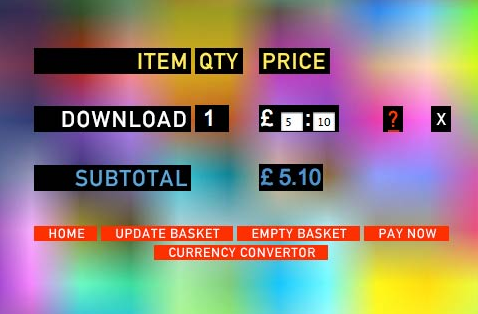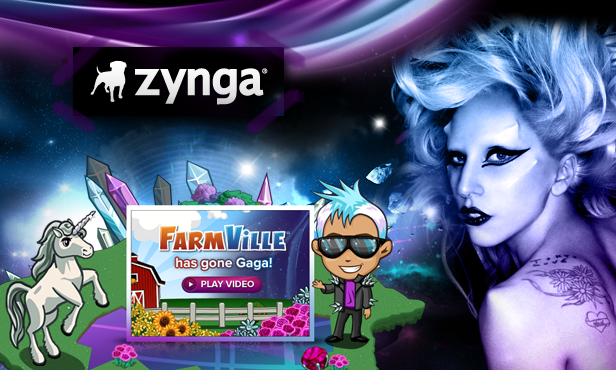Have Daft Punk’s Marketing Team Taken Us All In?
Random Access Memories is the most hyped album of recent times - but it's not just because of the music.

Anyone who has an internet connection (hello, you) will have heard about the upcoming Daft Punk album. And those of you who are discerning individuals with impeccable taste (hello again, you) will be wetting themselves at the thought of getting your hands on it.
By now, you know that it’s called Random Access Memories, and that the lead single features Pharrell Williams and Nile Rogers of disco band Chic, and is called ‘Get Lucky’. And you also know that it dropped on iTunes 30 minutes ago.
TADA!
You’ve forgotten something crucial, though: that Thomas Bangalter and Guy Manuel de Homem-Christo’s last album, 2005’s Human After All, was a bit shit. You, my friend, have been sucked in by the genius marketing machine of Daft Punk and their label Columbia Records.
Why You Can’t Wait: The Dark Arts Of Marketing
Contributing to the anticipation is not only the eight-year wait for a proper Daft Punk release, but the air of mystery that the band has engulfed itself in. The pair rarely do interviews and, as they always wear helmets in public and photos, you wouldn’t know either if they slapped you on the arse with a metallic-gloved hand. The album has been recorded in secret, with the finished tapes locked in a vault. But we’ll take what we are given.
Courtesy of Vice/Intel’s The Creators Project, a series of interviews with Daft Punk’s collaborators (see the latest with Pharrell above) has been tantalising us with the excellent musicians involved –yet very little else has been given away. We know that this album focuses on live instrumentation, and we know that the only sample used comes from an Australian rock band. All collaborators so far — Nile Rodgers, Giorgio Moroder and Todd Edwards — have praised the mysterious working methods of “the robots”, and talked about spaceships and otherworldliness that all adds to the sci-fi fantasy.
Crossing into another cultural sector, there are also the pictures of the band’s new chic image, with sharp sequined suits designed by Hedi Slimane of Saint Laurent — presumably after a rather large cheque was signed.
But the record company’s main tactics revolve around the drip-feeding of track segments. Drip-feeding has long been used in public relations for launches, but usually relates to the slow release of aspects of a story. Here, the content itself is being fed, bit-by-bit, to a hungry public and expectant media — before social media does the rest of their work for them.
Increasingly longer segments of ‘Get Lucky’ and ‘Lose Yourself To Dance’ have been revealed to a mass US audience during Saturday Night Live ad breaks and at the Coachella Music Festival. I’ve never watched an episode of SNL or been to Coachella, but the clips have been inescapable. 3.5 million people who have viewed the most recent video of ‘Get Lucky’ on YouTube in the several days since it was first aired. Watch it again. You know you want to.
Not only do these short clips make us both want to hear more and share them with our friends (to show we’re down with the mysterious act), but it’s also given bedroom producers the barest of bones to create their own edits of the new song. (Many are terrible.) Before the actual content has seen the light of day, there is gigabyte after gigabyte of content available for fans to soak up on the internet. Search for ‘Daft Punk Get Lucky’ in Soundcloud and see how many ‘fake’ versions of the song show up; they’re shared over social media, as rumours of leaks of the finished or unmastered track start “is it or isn’t it” discussions on message boards.
And because it’s being discussed in public forums, the media — like Junkee, and other news and entertainment sites — continue that discussion, mostly for the web traffic (hello, you). Dance music bible Mixmag has even made a viral video by pranking a member of their staff, with the main aim, no doubt, of getting more eyes on their website.
And then, of course, there’s Wee Waa. Why pick a tiny rural town in Themiddleofnowheresville, NSW, Australia, to launch perhaps the biggest pop release of the year? Is it because of the satellite dishes, lending a loose space-age theme to the launch, or simply because of the town’s peculiar name? It’s all by-the-by. By unexpectedly selecting a town of 2000 people for the May 17 listening party, Daft Punk have created another talking point, and garnered press coverage in publications ranging from Reuters to Pitchfork.
For Daft Punk and Columbia Records, it’s classic marketing and PR supported by a big budget and expert execution. And again, we’ve all been taken in. Because although Random Access Memories isn’t being released until May 20 in the UK and May 21 in the US, it’s been fast-tracked to May 17 in Australia. Meaning you can listen to the album on your drive up to Wee Waa.
It’s Not The First Time This Has Happened:
Daft Punk aren’t the only ones who have used genius marketing operations to ramp up the excitement factor for a new release. Here are a few other imaginative campaigns.
Radiohead – In Rainbows
Pay-what-you-want. That was the simple marketing concept behind Radiohead’s seventh studio album, In Rainbows. After a split with record company EMI, and in an attempt to stave off fans illegally downloading it, Oxford’s finest invited punters to download the LP from their website and type whatever amount they were willing to pay in a box.

From music blogs to the mainstream press, the world went wild for the idea. It would prove once and for all that peer-to-peer pirates were really honest folk who would be happy to pay a sensible sum for good music, they said. Well, not quite.
Research by ComScore suggested that 62% of people paid not a single cent for the album, and about 17% paid less than 4 USD. It’s difficult to measure the financial gain for Radiohead compared to a traditional album release, but with an average payment of 2.26 USD per download of In Rainbows, and with the greater number who downloaded the album than otherwise would have — not to mention the publicity generated — it has to be deemed a successful experiment.
Lady Gaga – Born This Way
Gaga was arguably the first star to truly embrace the enormous power of social media. At last count, she has over 36 million followers on Twitter, second only to Anne Frank’s favourite popstar (but most of his are fake). She was also the first artist to rack up 1 million YouTube views, and 56 million people have ‘liked’ her Facebook page.

To launch Born This Way in May 2011, she partnered with no-end of prominent online companies; with games developer Zynga, for GagaVille, a version of the enormously popular FarmVille game (above); with VEVO, giving them exclusive premieres of tracks; and with iTunes, for a promotional countdown to the May 23 launch date. The album was streamed for free on major news websites across the world and sold for just 0.99 USD as a digital download on Amazon in the US on its launch date. Deals were also penned with electrical retailer Best Buy and peddlers of crap coffee Starbucks, among others.
The album hit number one across world album charts — and had shifted 8 million copies by the end of the 2011.
Sigur Rós – Valtari
In 2012, for the release of their sixth album, the Icelandic four-piece and barmy creators of their own language gave 12 filmmakers an identical small budget to make films based on the album. There was no greater direction than that. Sigur Rós wanted the selected auteurs, among them Ramin Bahrani, Alma Har’el and John Cameron Mitchell, to make whatever they felt with complete creative control. Between May 21 and the end of the year, 16 mystery films were made and released.
In doing so, media were provided with interesting content to disseminate about the album every two weeks. And as well as being made available online, the films were shown at organised screenings and made available to buy as a DVD or digital download. And fans were invited to submit their own creations, too. Online marketers do backflips over ‘user-generated content’ like that.
So – Who’s The Winner?
Whatever mind games Daft Punk are playing, and whatever dark arts Columbia Records and associated marketing agencies are employing, they’re all working. The combination of big money deals with TV networks and fashion brands, tight control of the release of musical content, the production of supporting content, and the facilitation of fans to create their own content and spread it virally makes Random Access Memories, to my mind, the best album marketing campaign ever.
Let’s just hope the album lives up to the insane hype, rather than sinking like the lead brick that was Human After All. Come on Robots – don’t let us down!
—
David Wild is a freelance entertainment journalist, PR consultant and content marketer. He was formerly sports betting columnist for Wall Street Journal Europe and London financial daily City AM. He regularly contributes to The Brag, Beat and other music publications.
